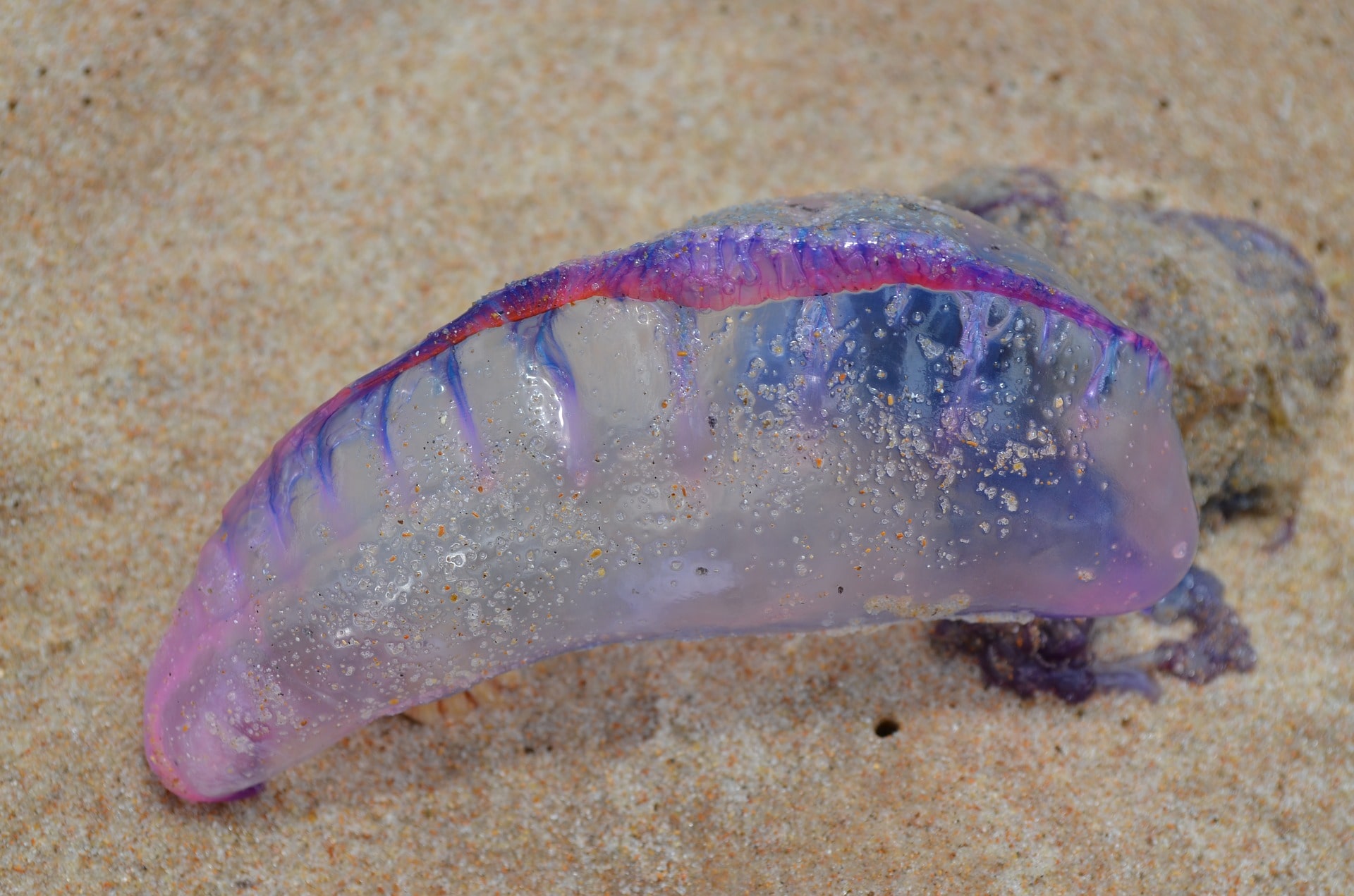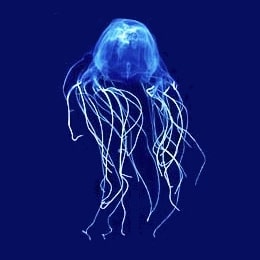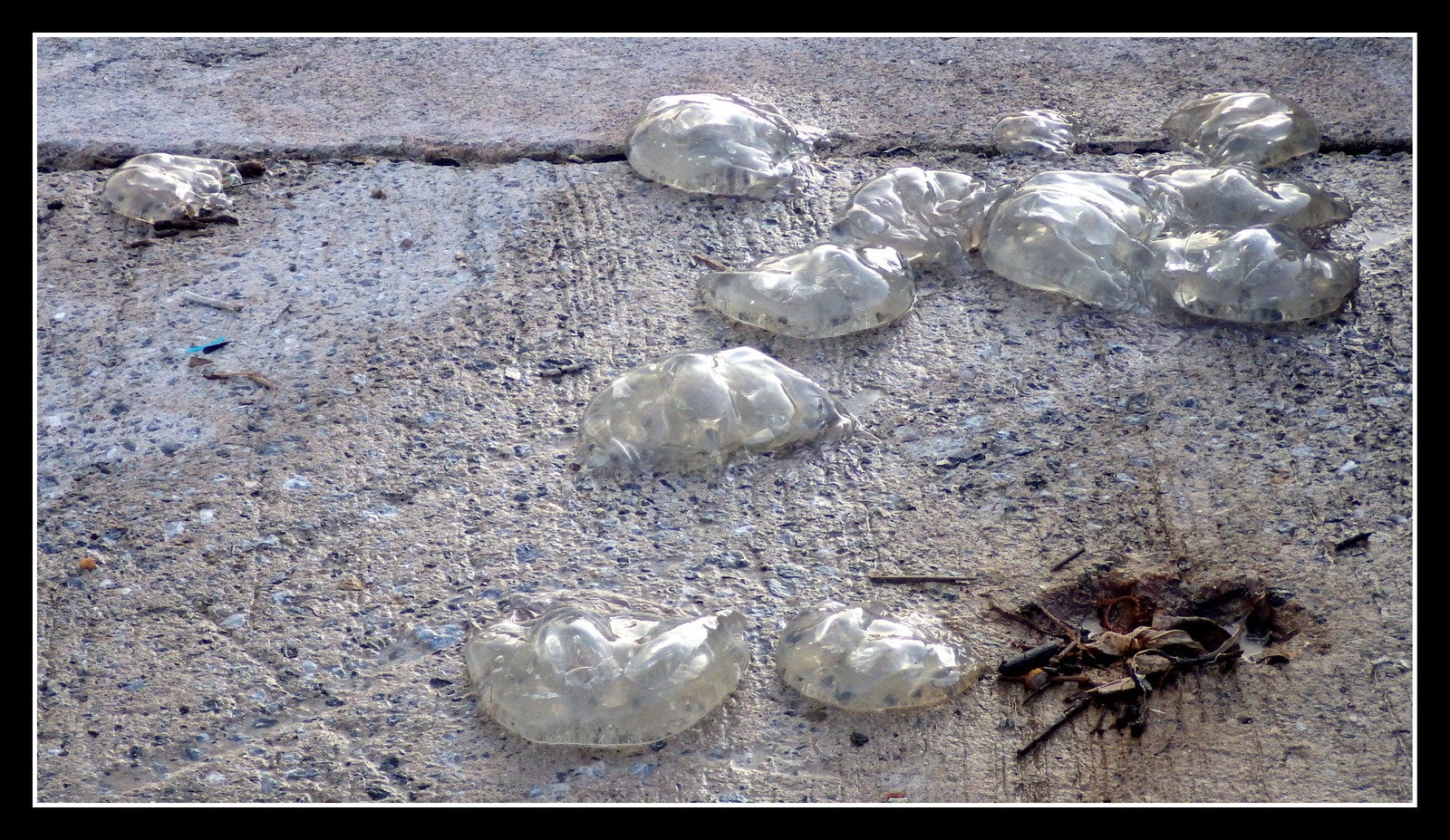 |
| Sea Wasp, An Invisible Dangerous Creature |
Sea Wasp, An Invisible Dangerous Creature. Sea wasp or in scientific language Chironex fleckeri is an animal whose appearance is not at all similar to wasp insects that live on land.
This sea wasp was originally a type of jellyfish whose tentacles can reach three meters in length with a hood diameter of up to 30 centimeters. The sea wasp name itself is given to this jellyfish because of its ability to provide a painful and even potentially fatal sting to humans. The sting comes from the poison that is deposited in the tentacles.
Sea Wasp, An Invisible Dangerous Creature
In scientific classification, sea wasps belong to the Cubozoa class known as box jellyfish. The name was given because unlike true jellyfish in the Scyphozoa class which have a round hood, Cubozoa member jellyfish have a hood that almost resembles a cube or block.
Similar characteristics apply to sea wasps, which are the largest species of box jellyfish in the world. The sea wasp has an almost transparent and bluish body. This physical appearance makes this jellyfish difficult for other creatures to see, including humans.
 |
| Sea Wasp, An Invisible Dangerous Creature |
There are 30 tentacles located on the left and right side of the hood. Unlike true jellyfish, which can only swim slowly, sea wasps can swim fast by expanding the underside of their hoods rapidly. In this way, a sea wasp can move at a speed of up to two meters per second.
Sea wasps also have rows of eyes on the sides of the hood. Some of these eyes are reported to have a complex structure because they have parts such as the lens, iris, and retina.
In other words, theoretically the sea wasp's eye can be used to distinguish objects. However, experts are still not sure whether sea wasps can actually see and determine direction using their eyes because these jellyfish have a simple nervous system.
Sea wasp has a habitat that is spread from the waters of the Philippines to Australia. However, this animal is mostly found in northern Australia. They like shallow waters and avoid habitats filled with coral reefs and seaweed.
The sea wasp breeding season occurs at river estuaries in the summer local time. When mating, male jellyfish will enter sperm cells into the female body. The eggs that have been fertilized by male sperm then develop into planula larvae which leave the body of the female jellyfish.
Sea wasp planula larvae will then stick to the seabed and develop into plant-like animals known as polyps. Unlike free-living adult jellyfish, polyps never move from the bottom of the water where they live.
When spring arrives, the polyp part of the branch will come off and turn into small jellyfish. The jellyfish will then gradually enlarge into adult jellyfish.
A Poison That Harms Humans
Now I will talk about what makes sea wasps so afraid of humans: their poison. Sea wasp venom comes from cells called nematocyst that are located all over the tentacles and number in the thousands.
When the tentacles of the sea wasp come into contact with other animals, these needle-shaped cells will activate automatically and then release a poison that can paralyze the victim instantly.
With this poison the sea wasp can catch its food consisting of fish and shrimp. The toxins possessed by sea wasps also have harmful effects on humans. If there is a swimmer who accidentally comes into contact with this jellyfish, initially the swimmer will feel pain on his skin.
 |
| Sea Wasp, An Invisible Dangerous Creature (source) |
Then depending on the location of the sting, in just a few minutes the swimmer will experience symptoms such as dizziness, difficulty breathing, and chest pain. These symptoms can arise because sea wasp poison attacks the skin, heart and nervous system simultaneously.
The first aid that is usually given to victims of sea wasp stings is to immediately remove the victim from the water so as not to drown. The next step is to find the tentacles that are still stuck to the skin and then douse them with vinegar so that they can be removed safely.
Ice packs and pain relievers can also be given to reduce the pain experienced by the victim. After taking these steps, the victim must be immediately taken to the nearest hospital for further assistance.
Read More: Lamprey, A Vampire in the Fish World
From 1884 to the present day, sea wasps have caused at least a dozen human deaths. That's why on some northern coasts of Australia, there are warning signs for visitors to watch out for jellyfish.











0 comments